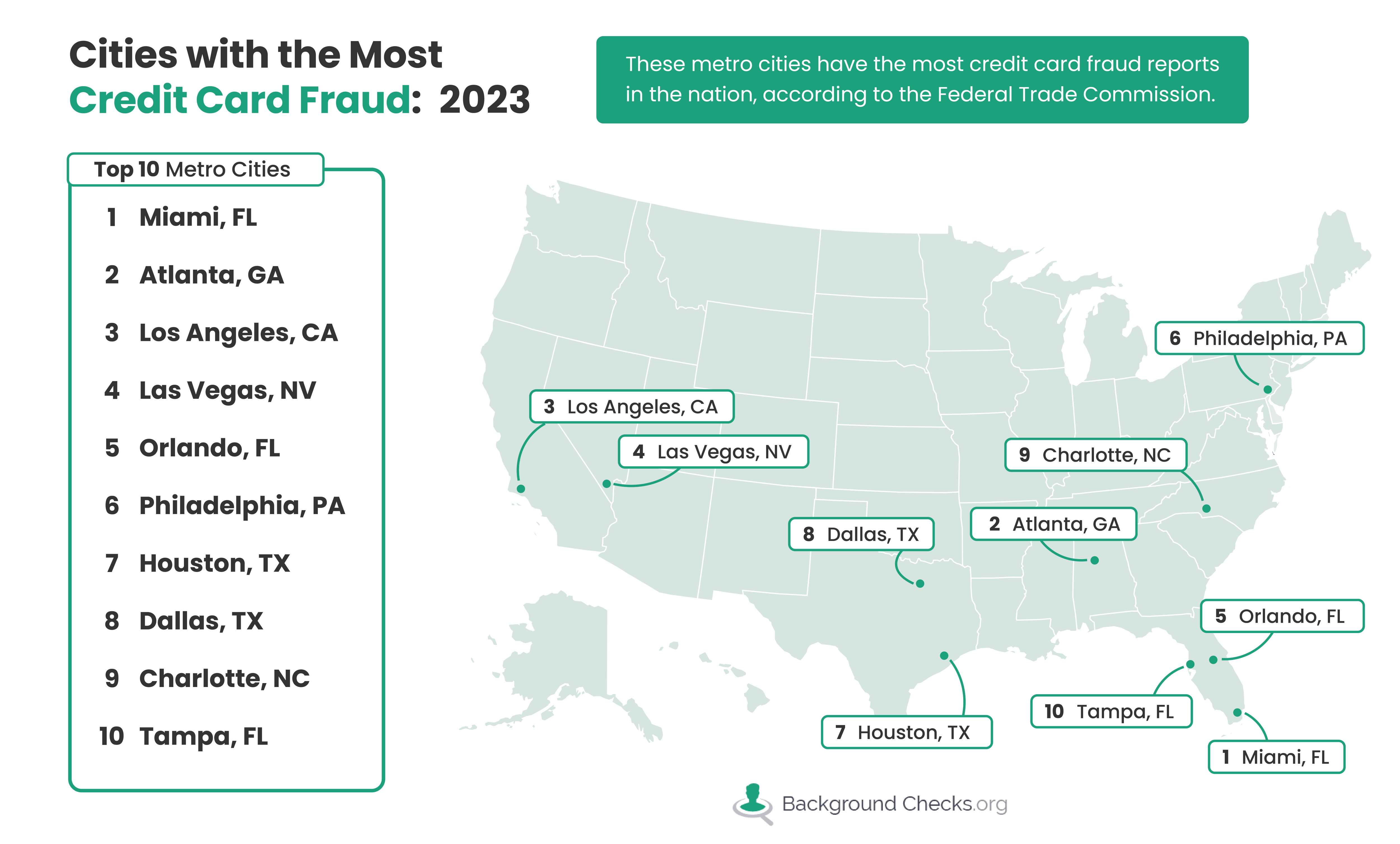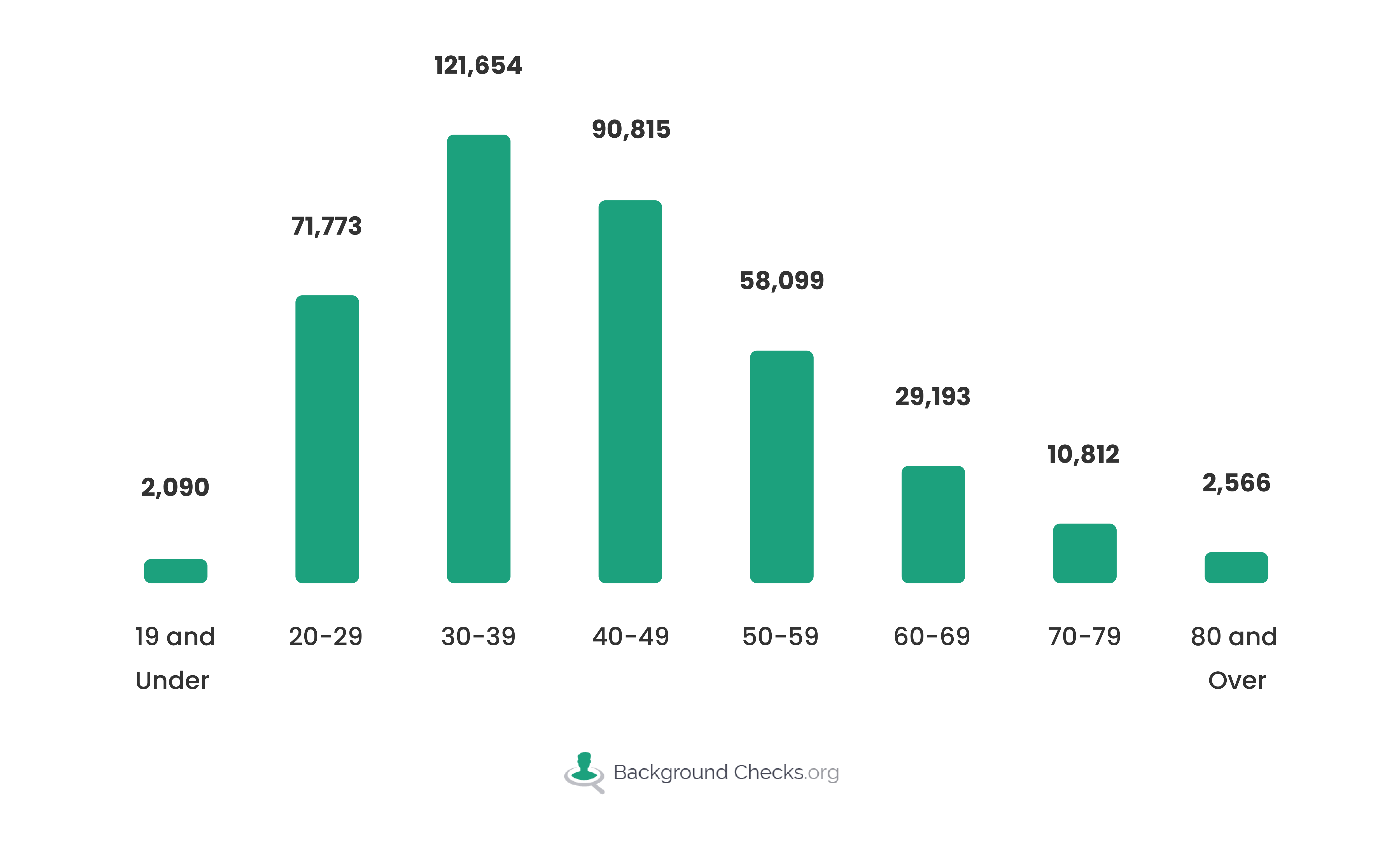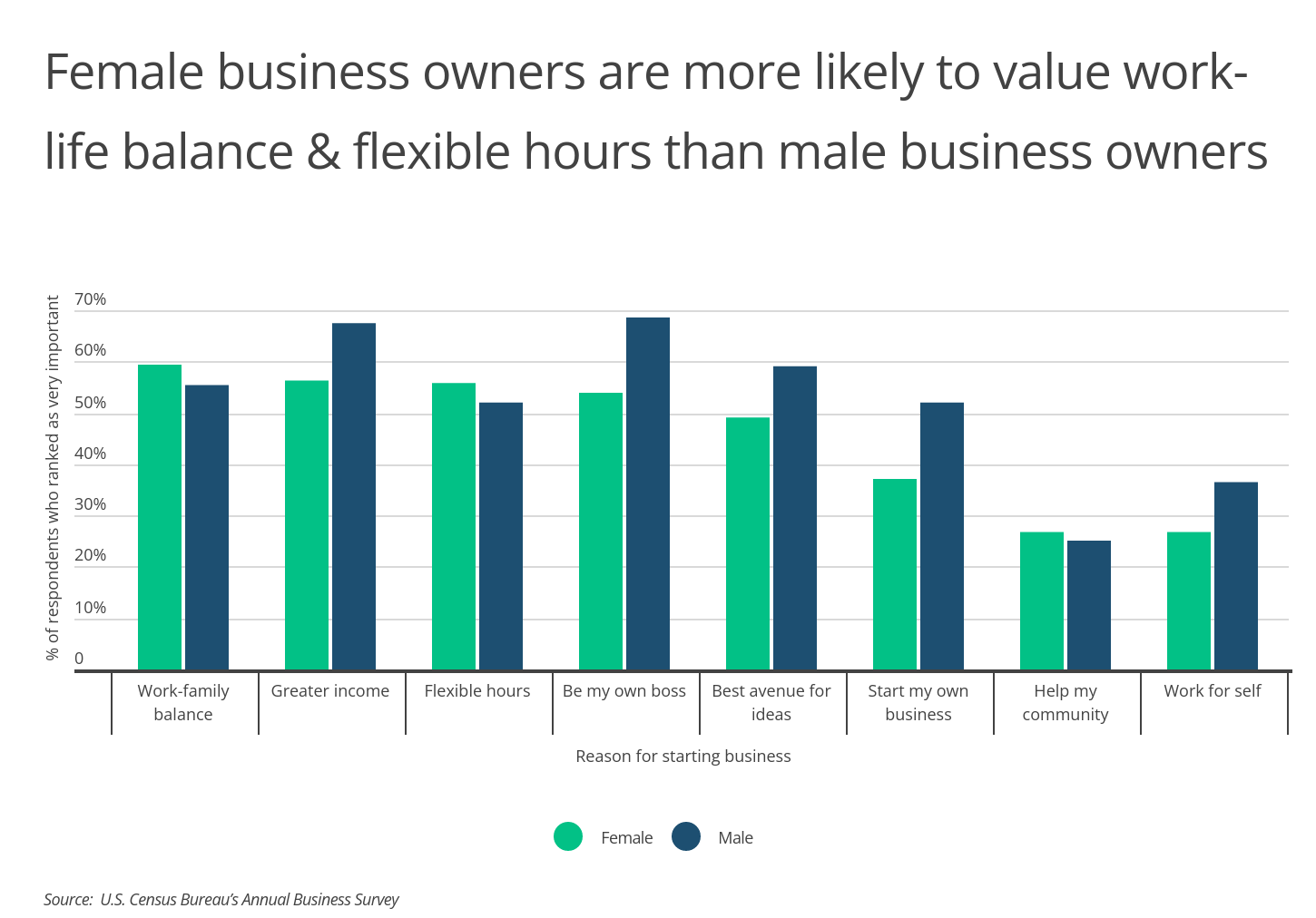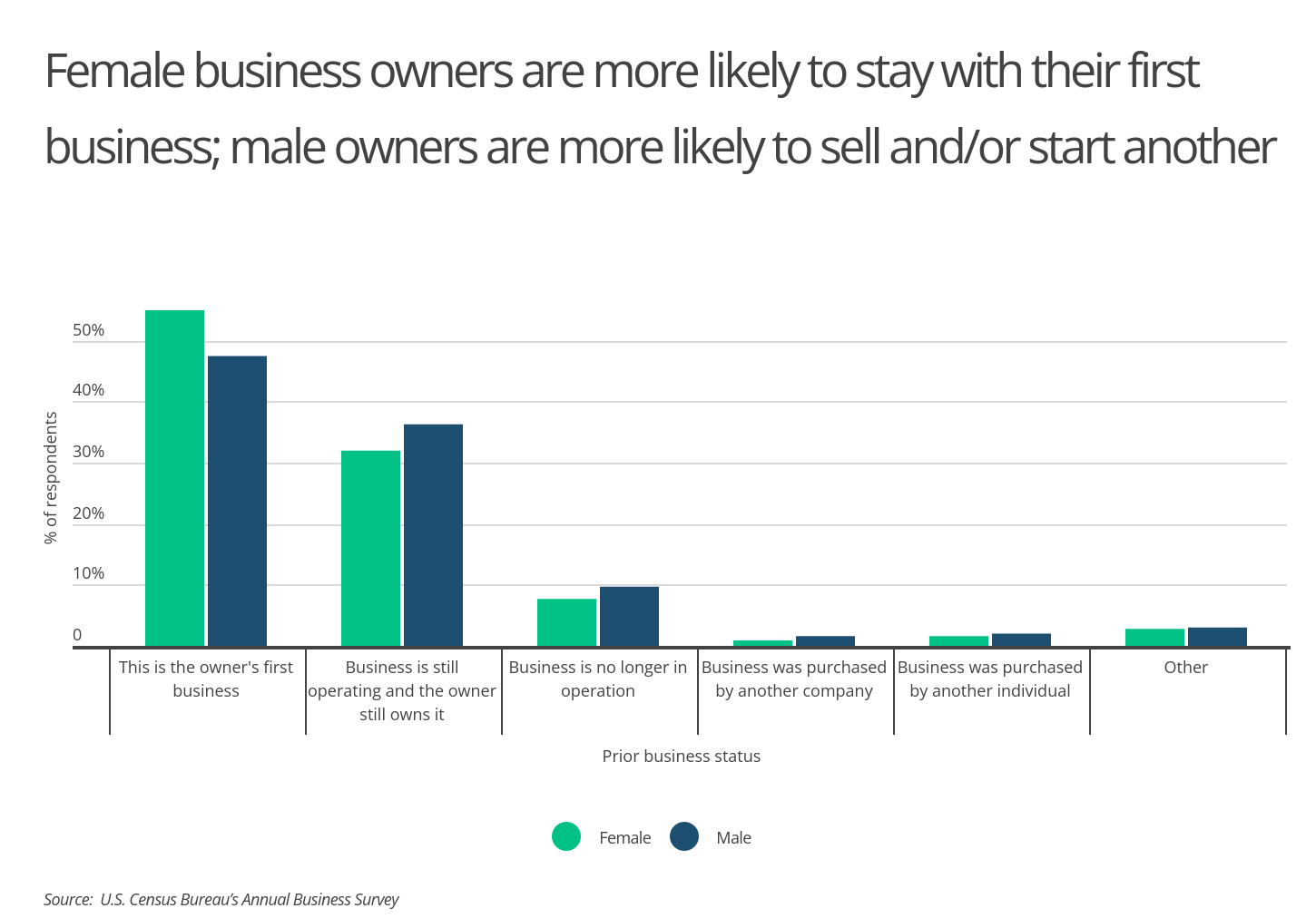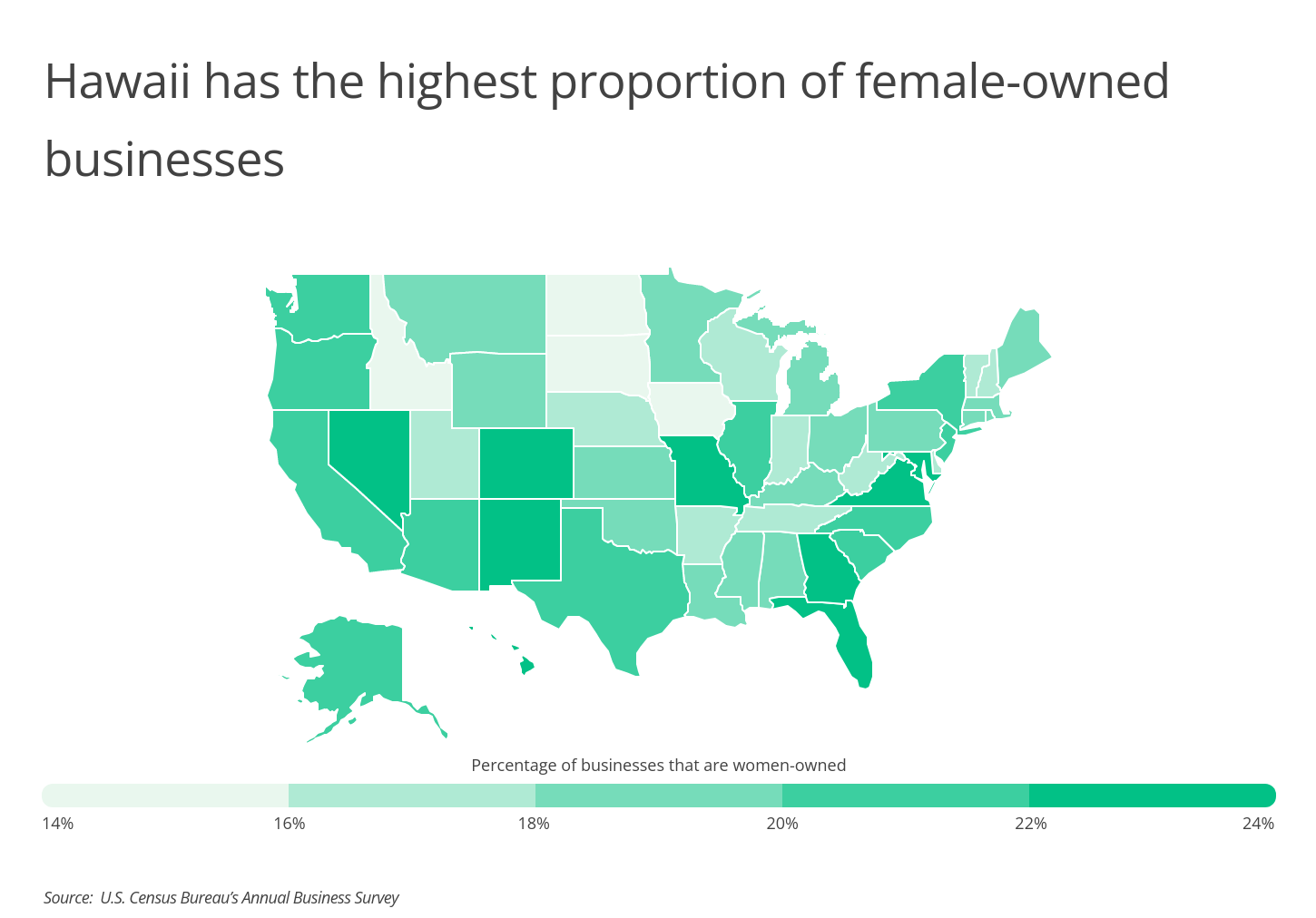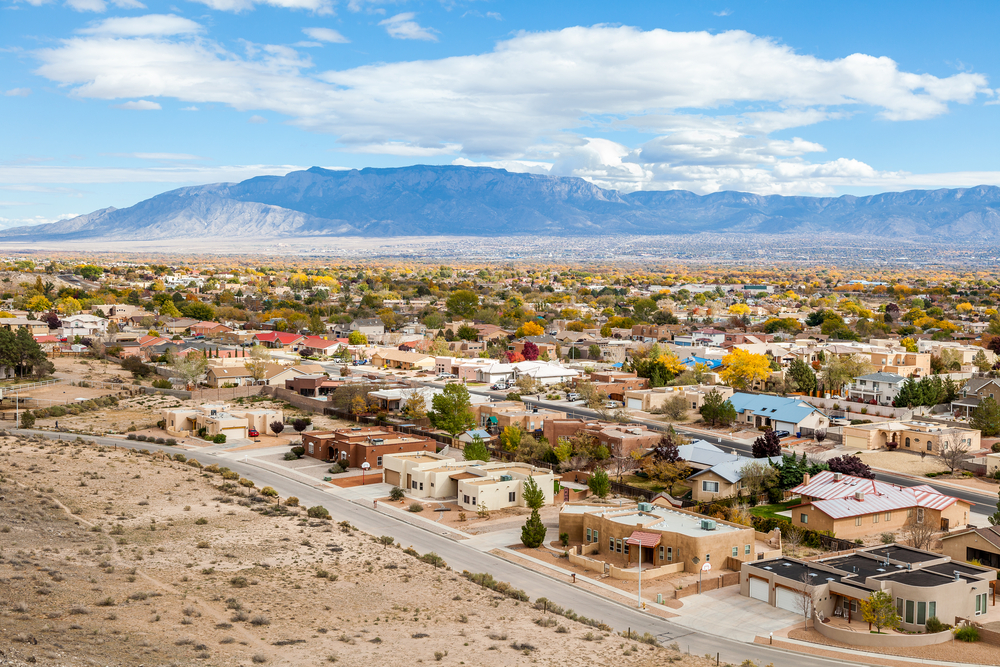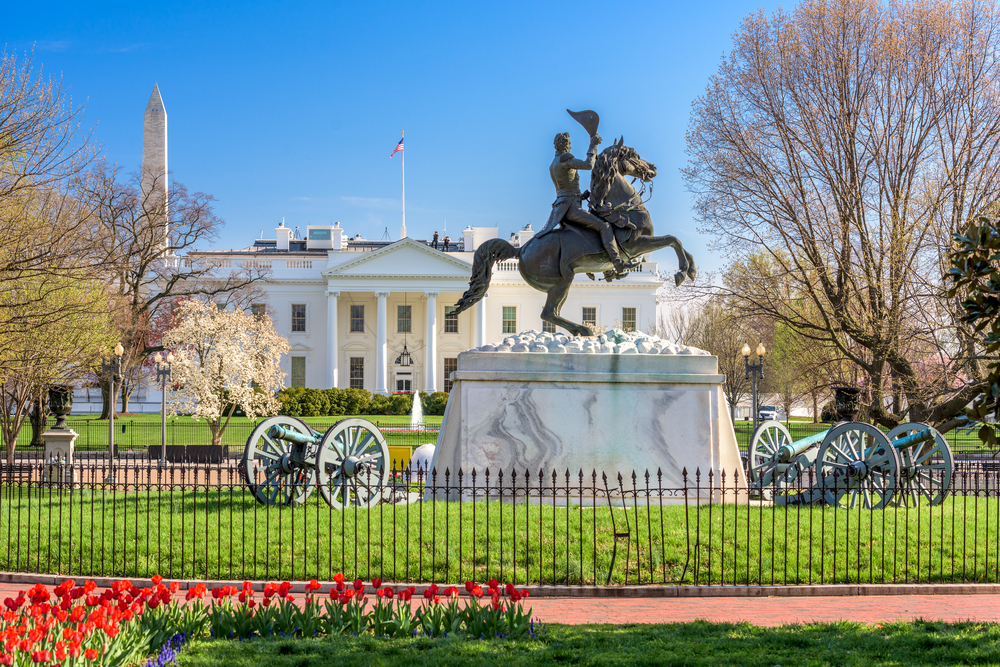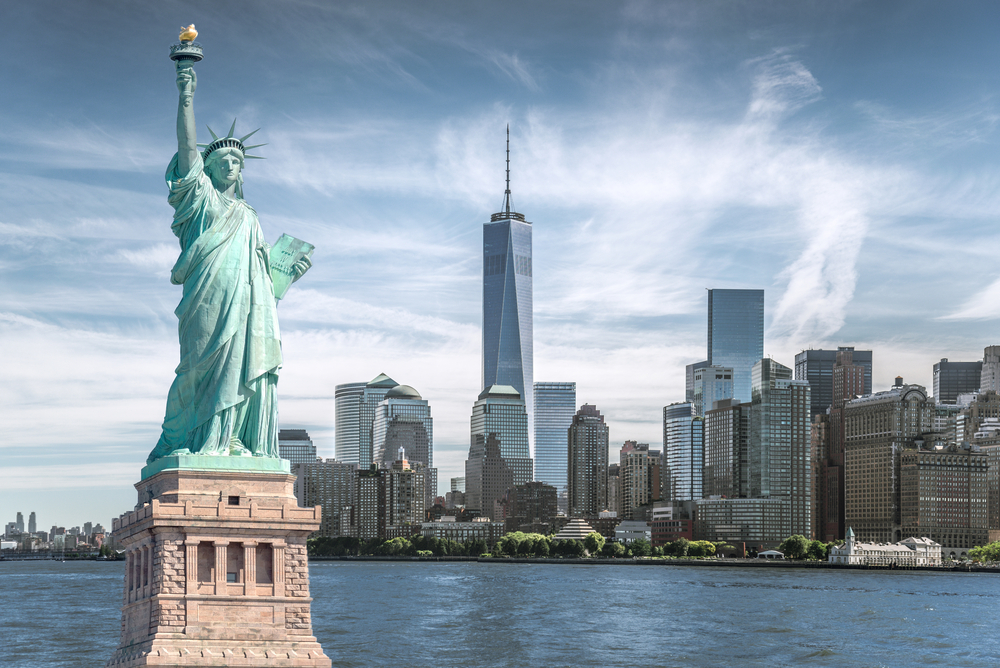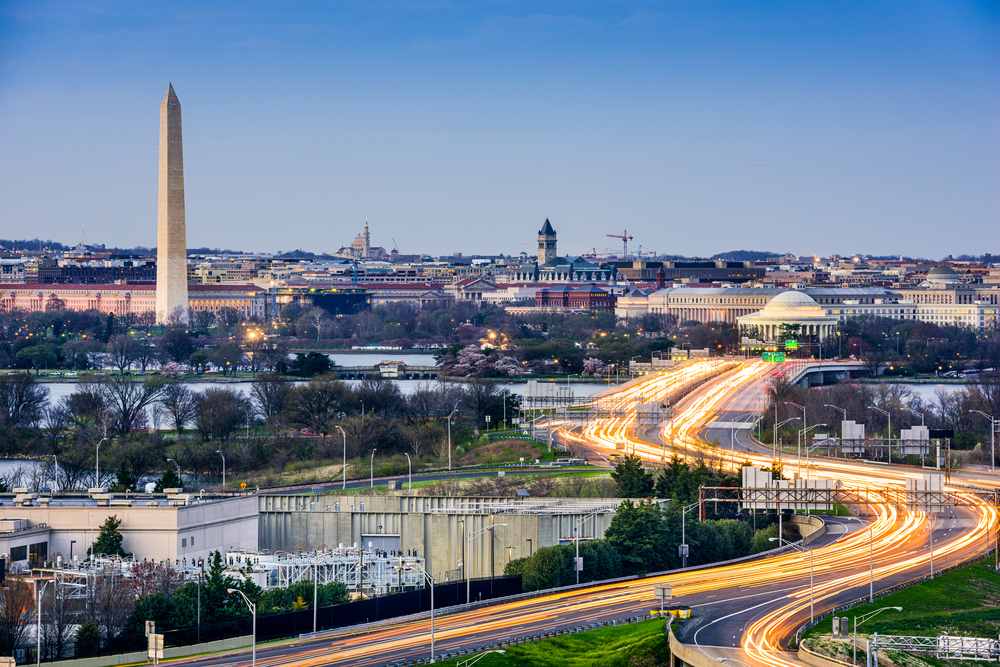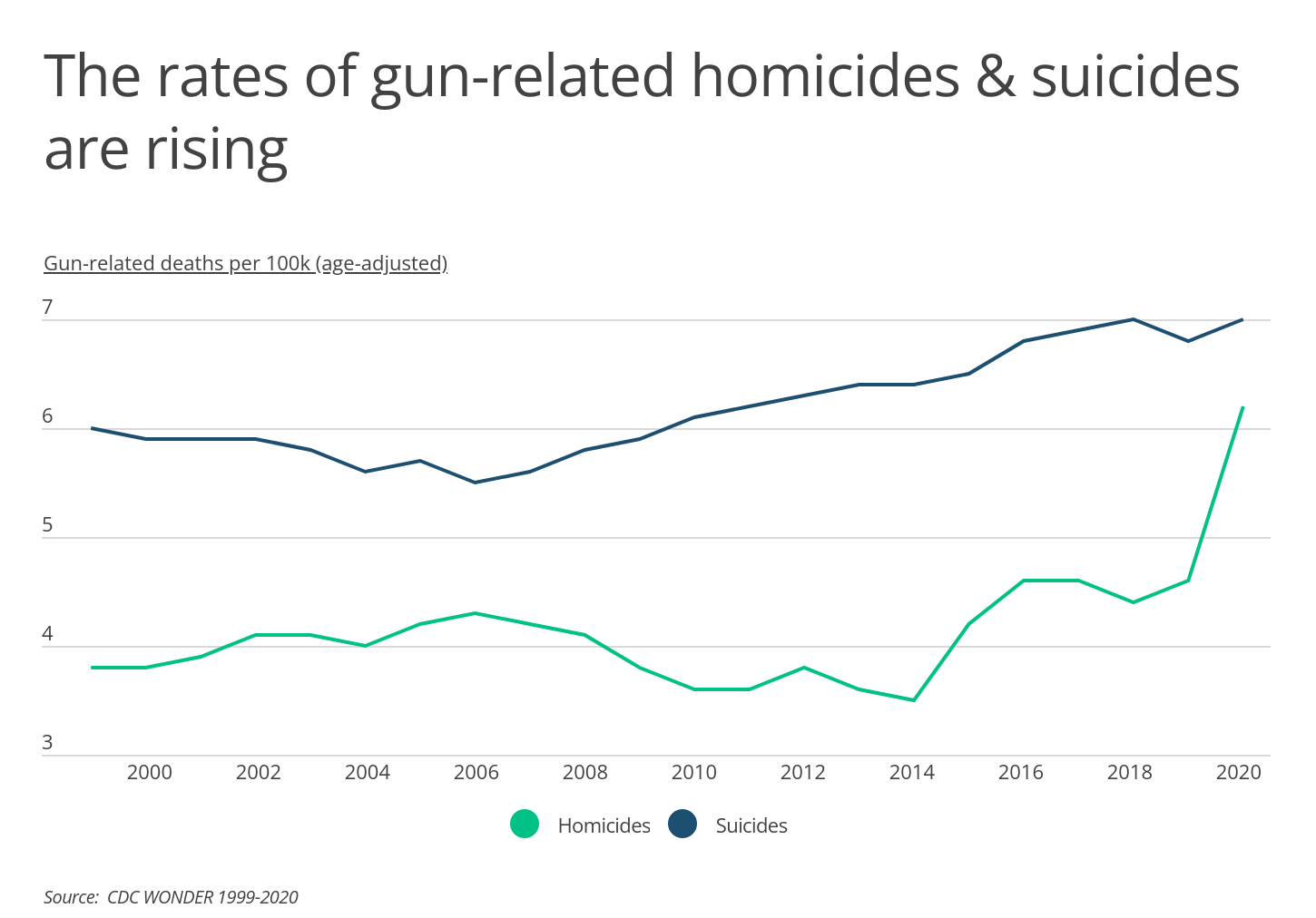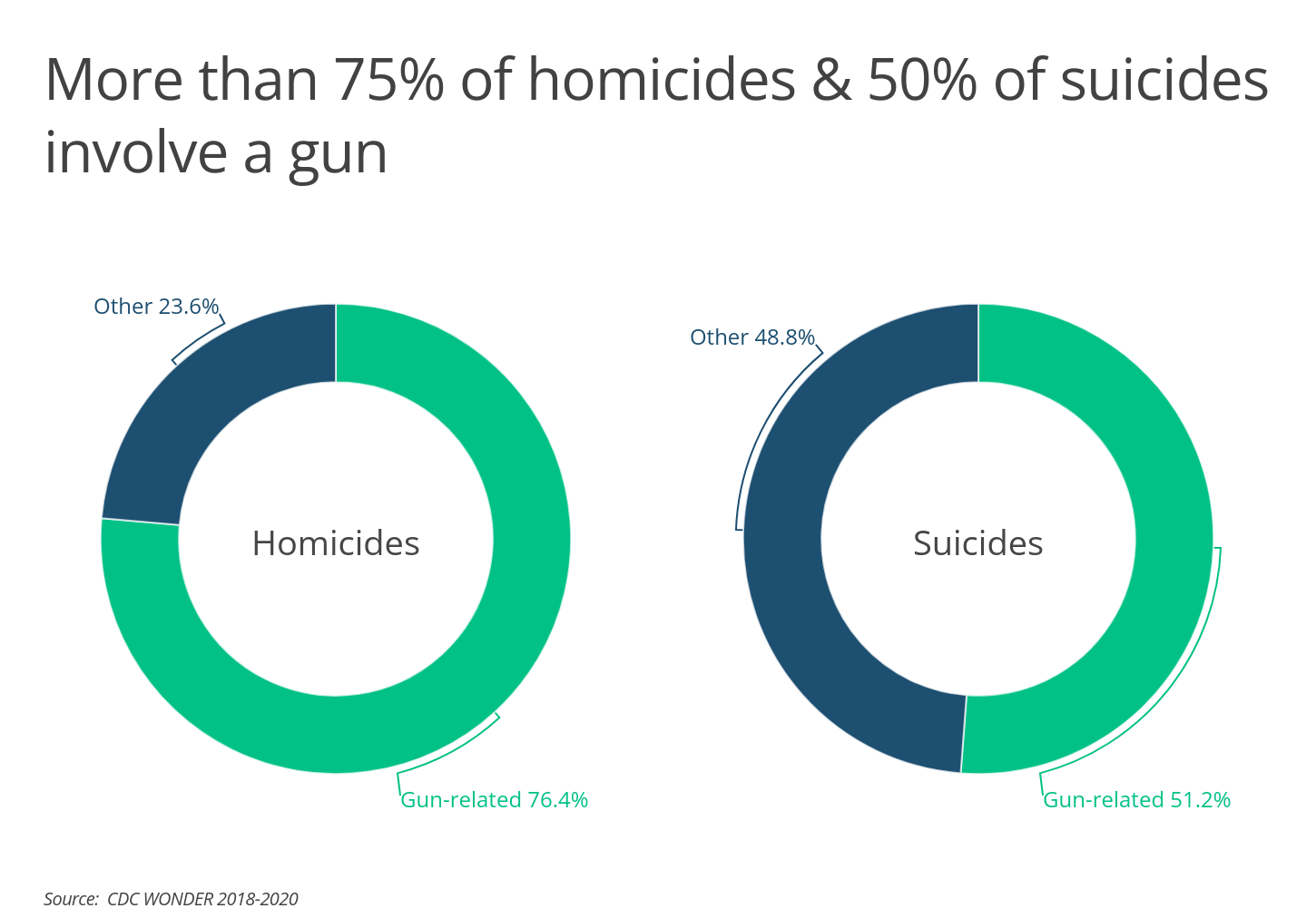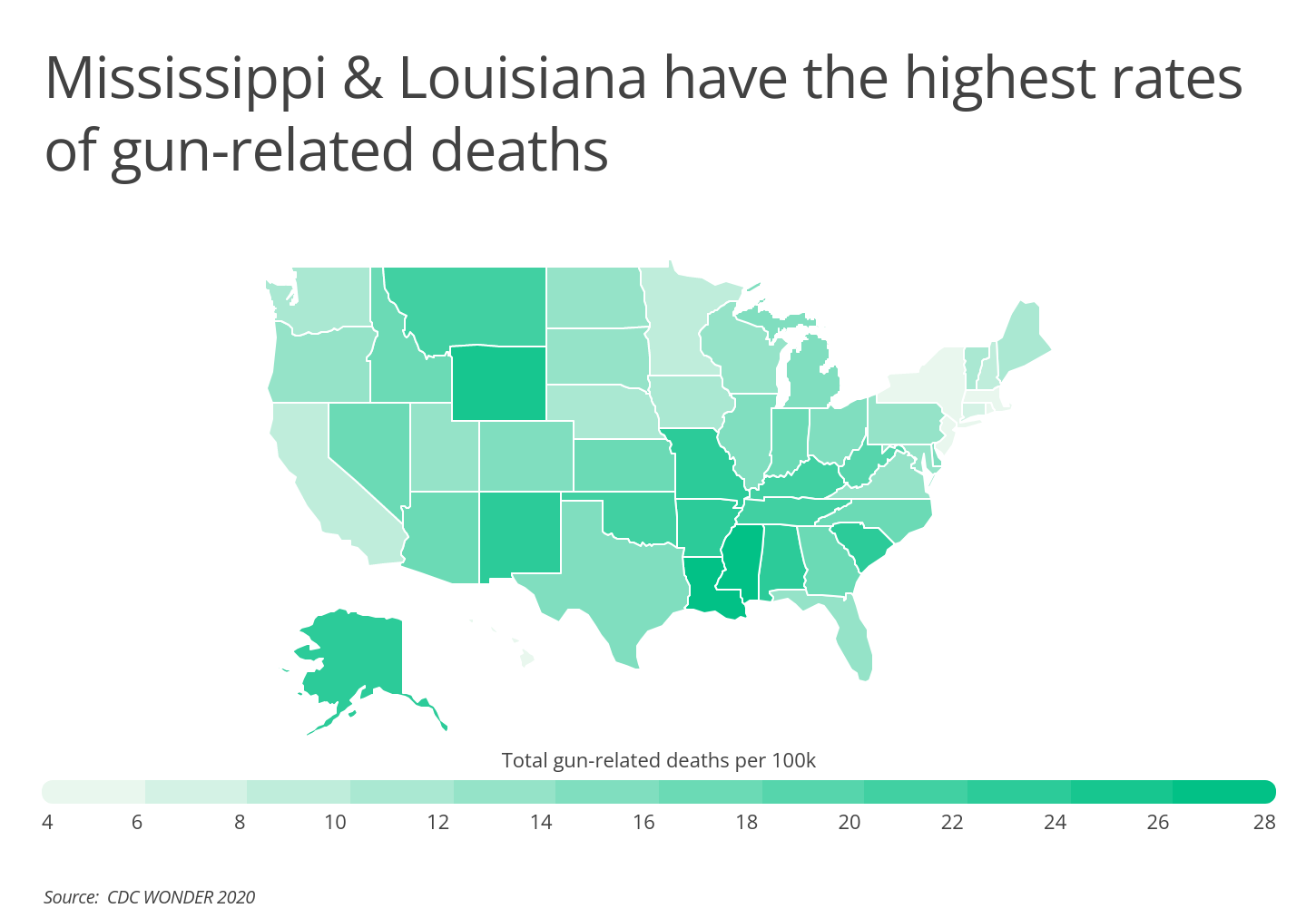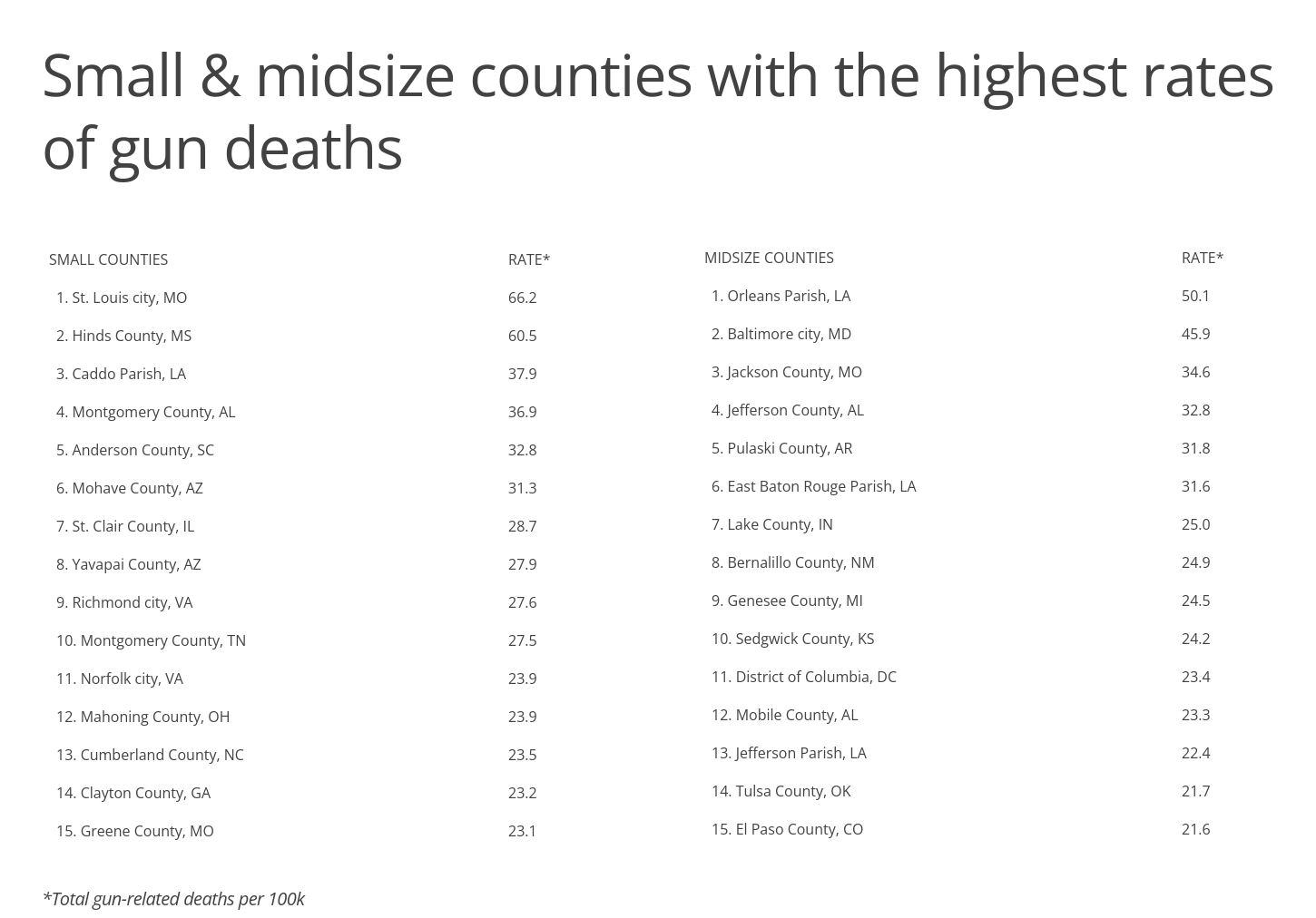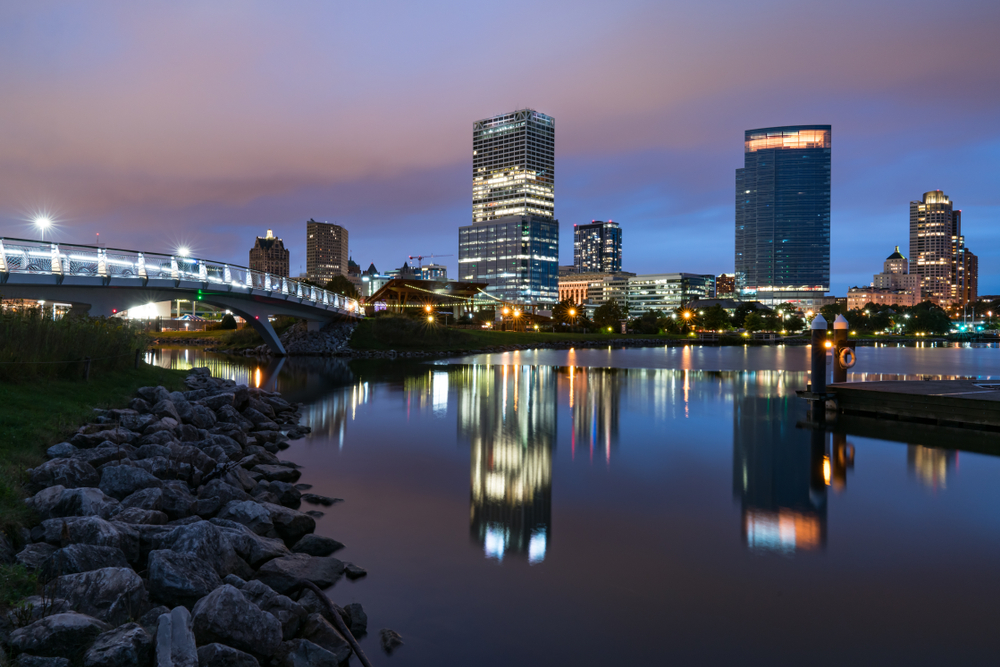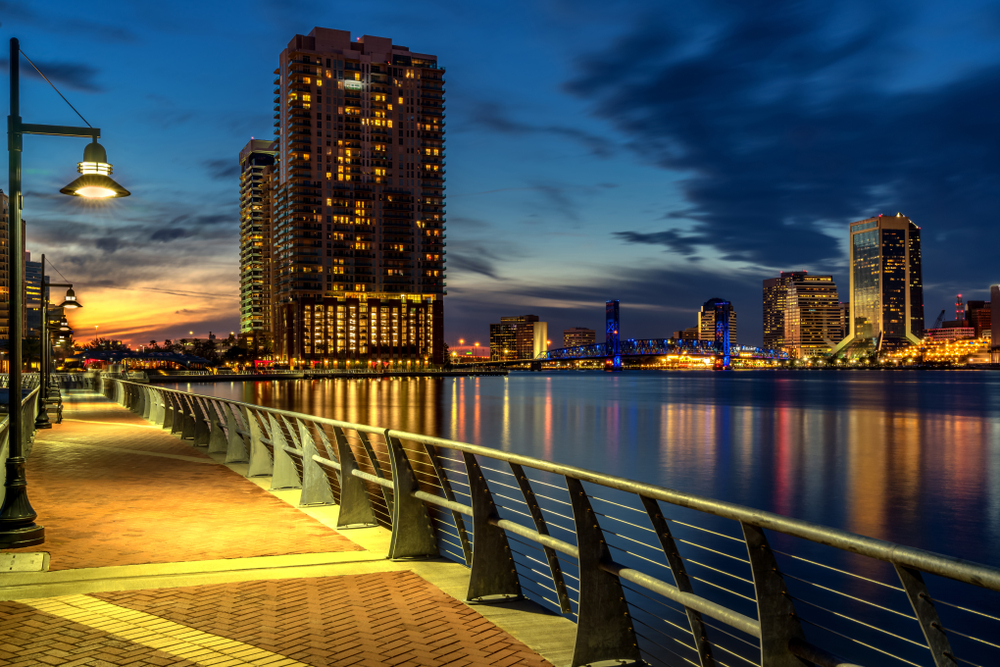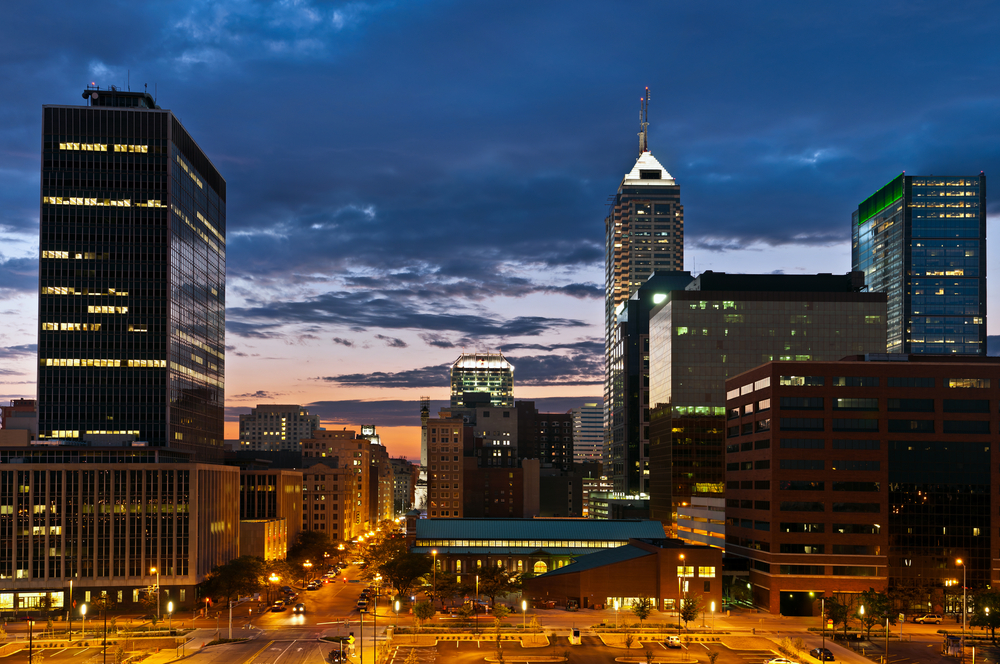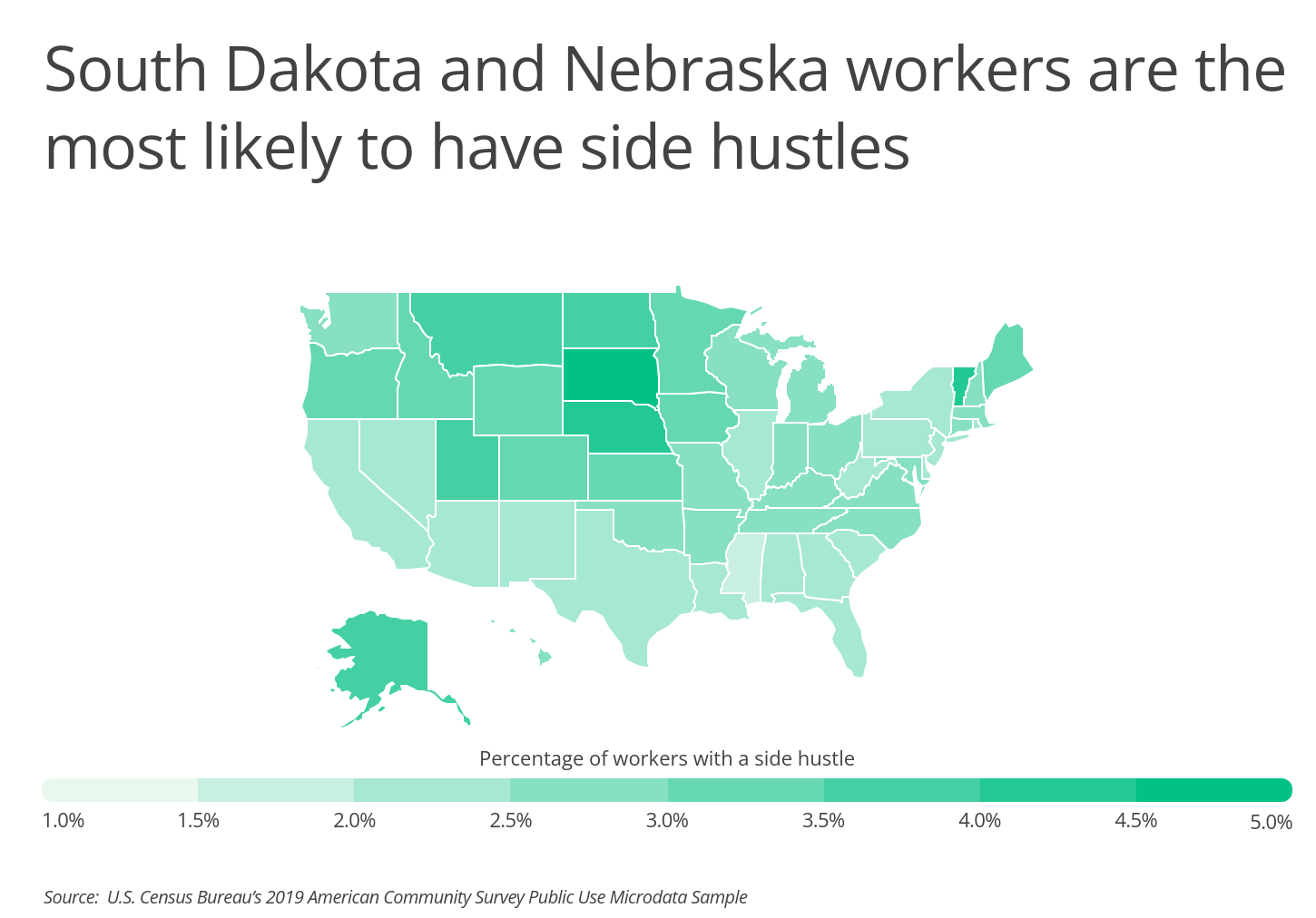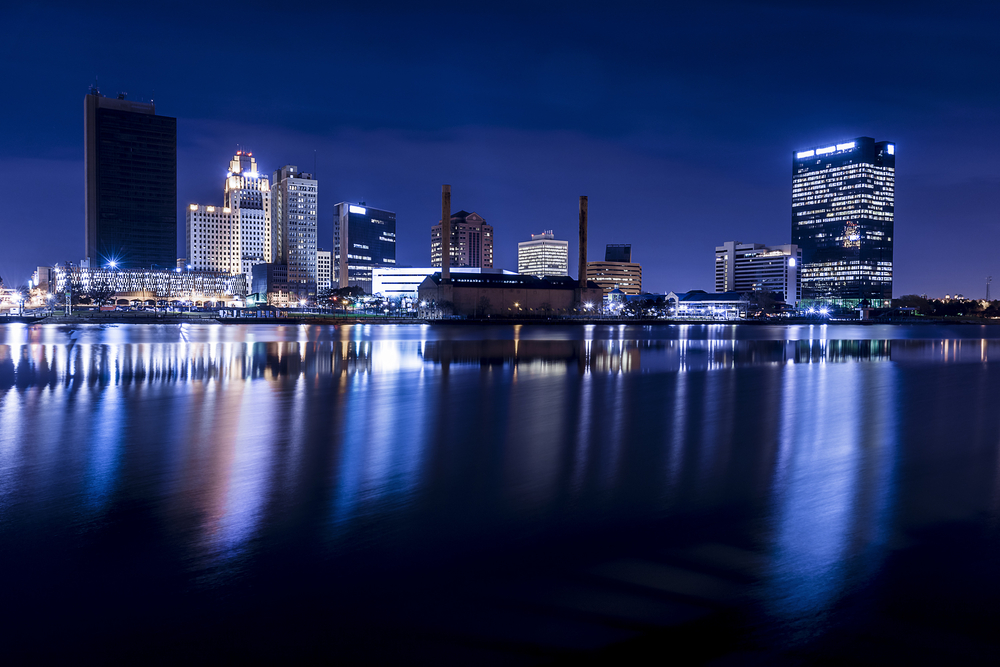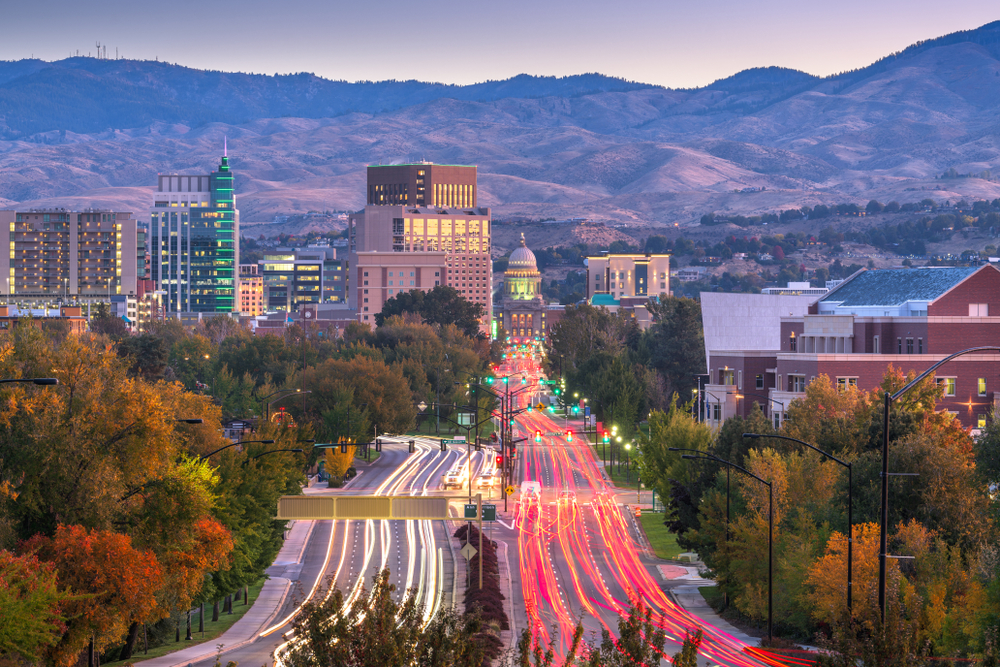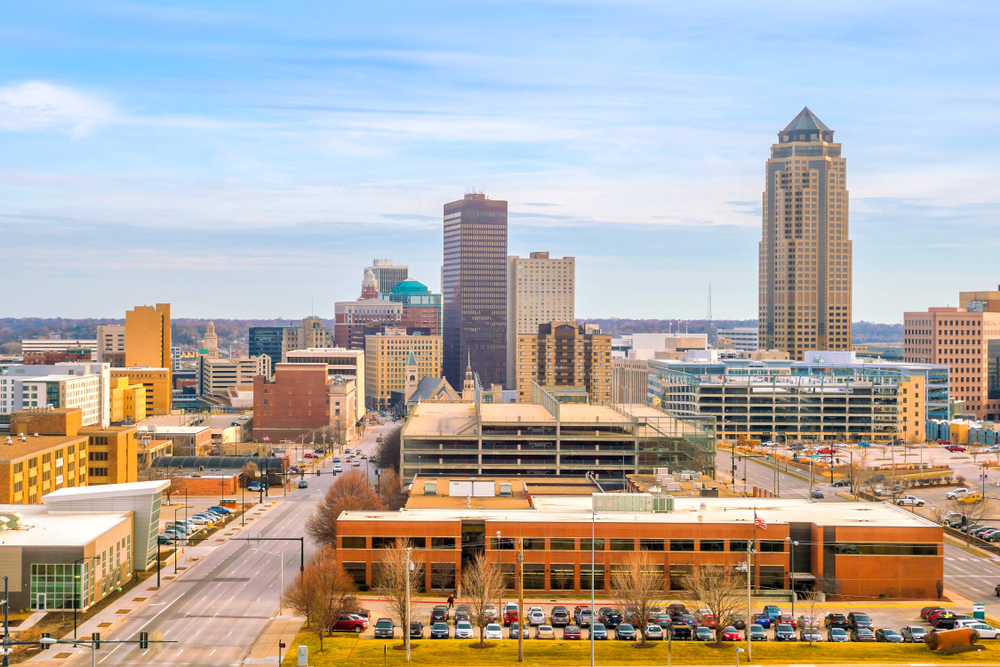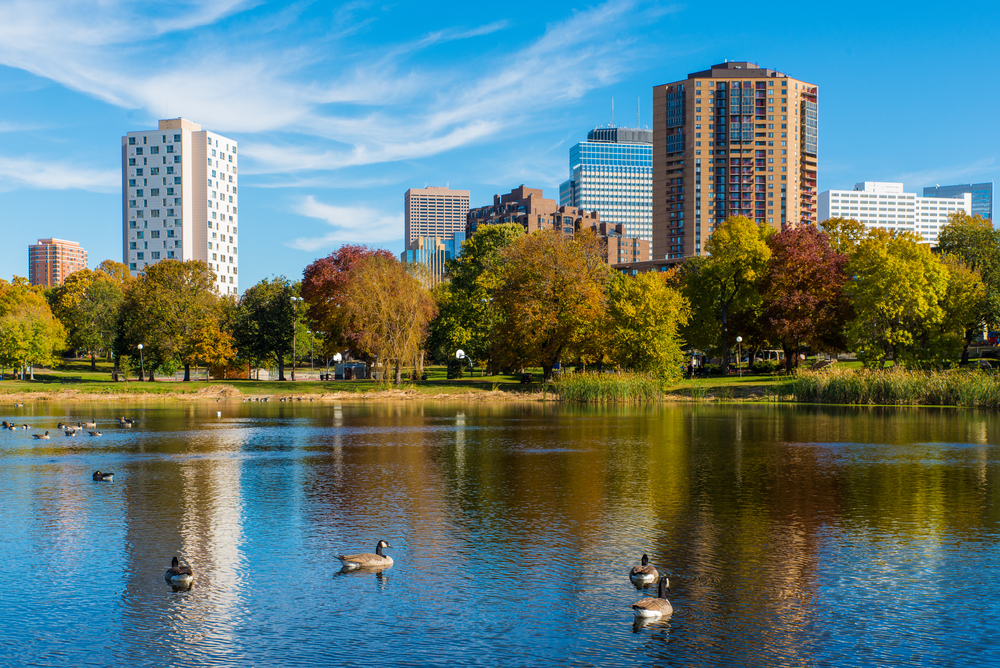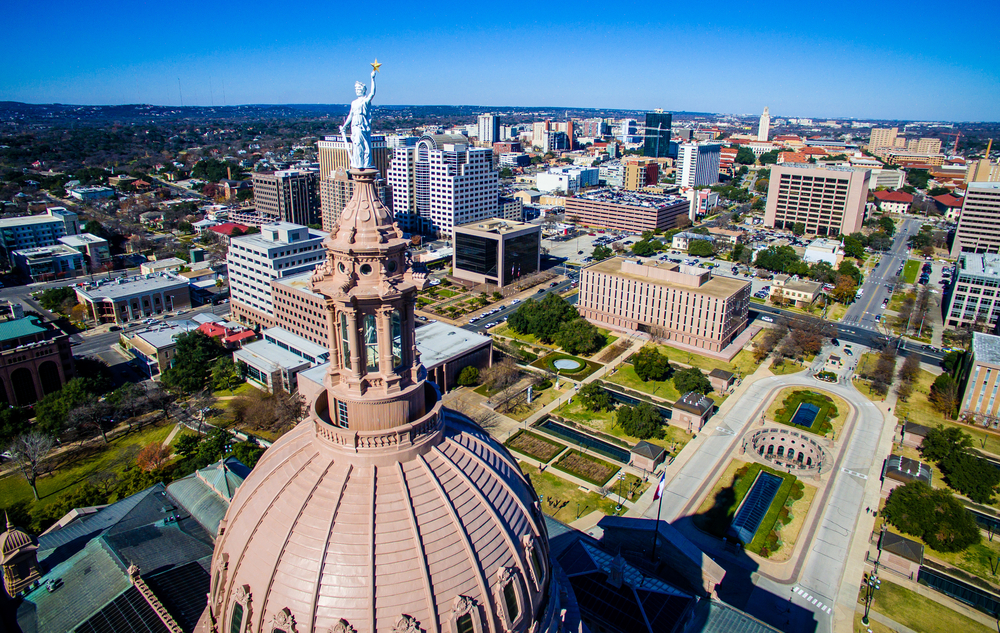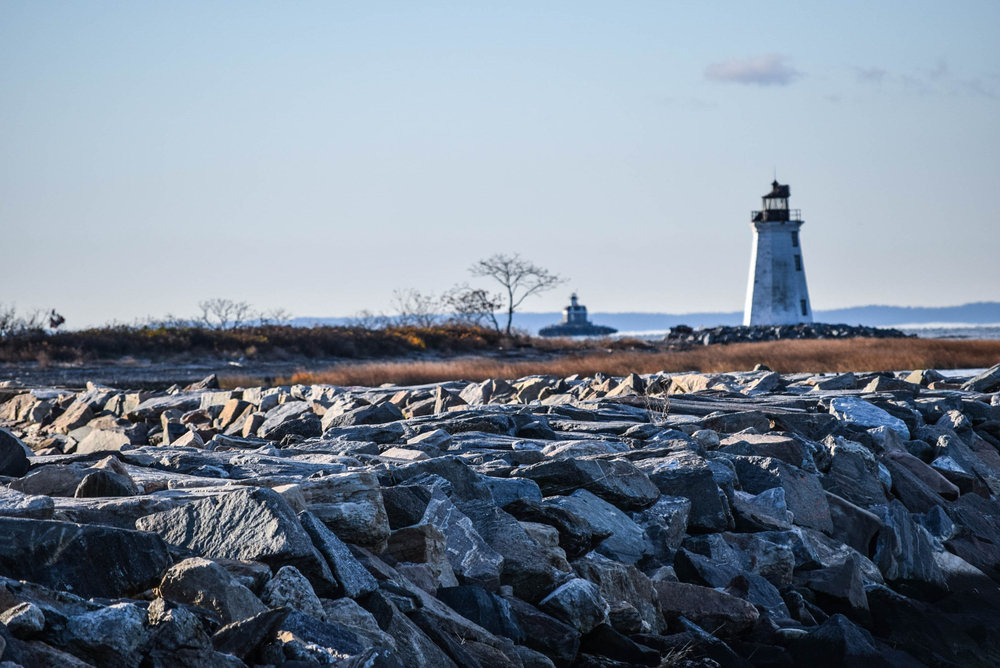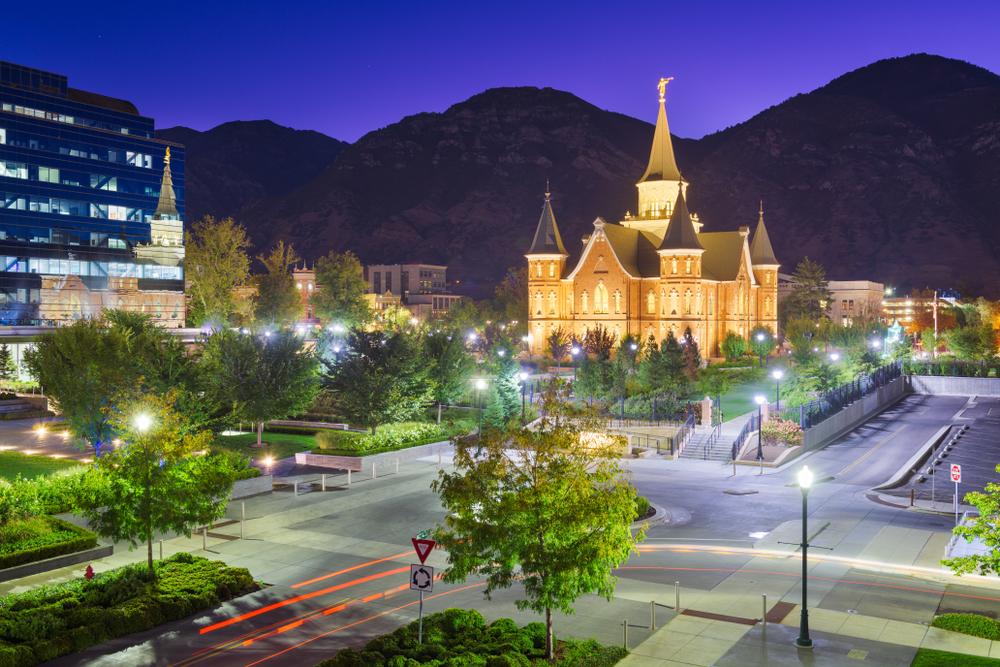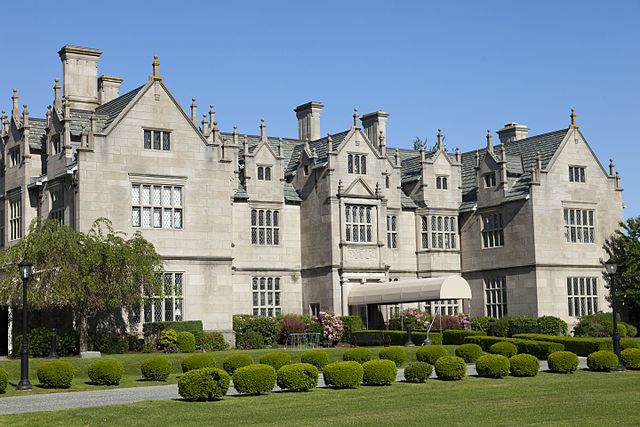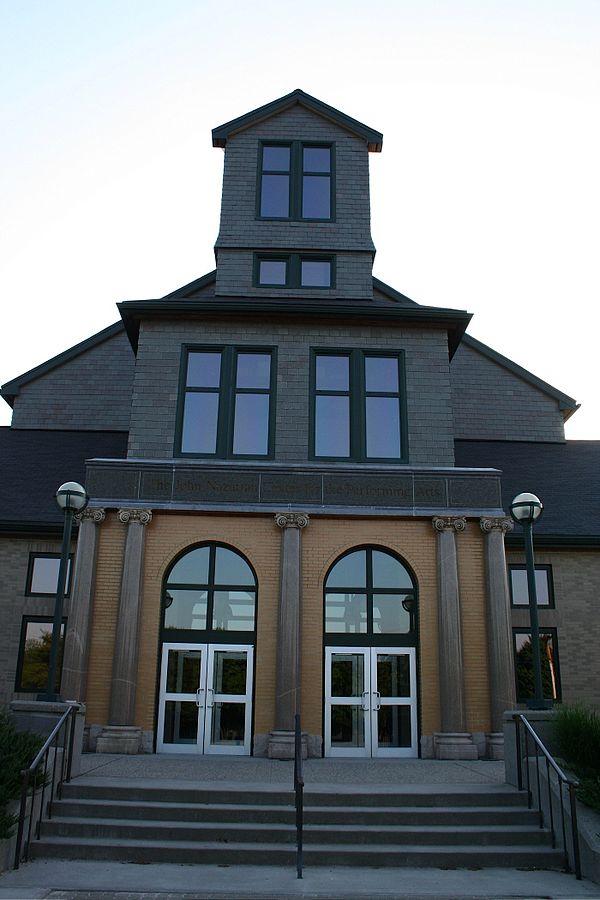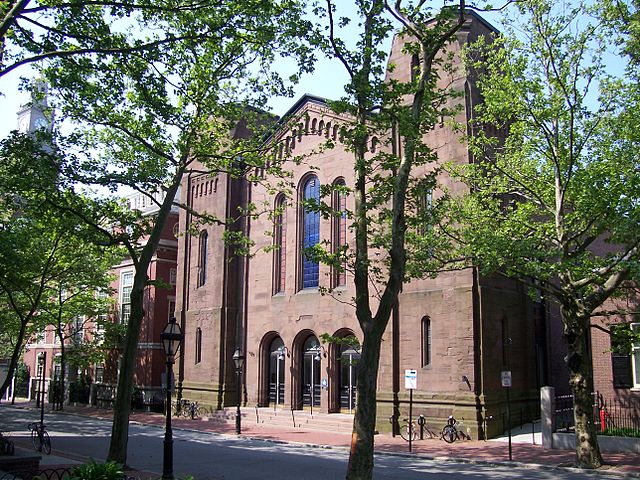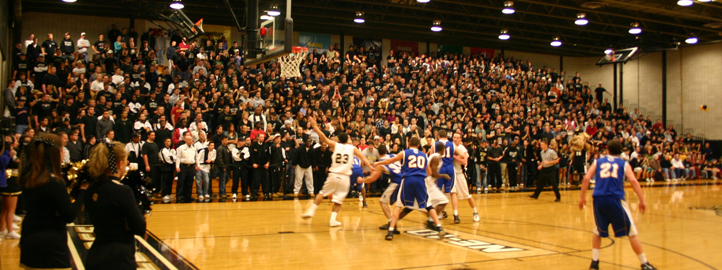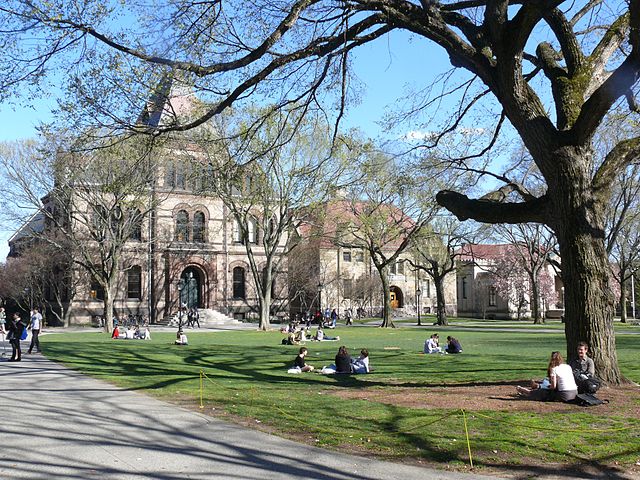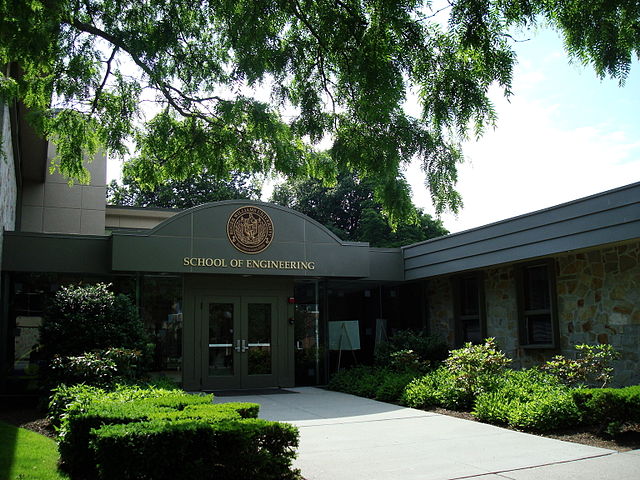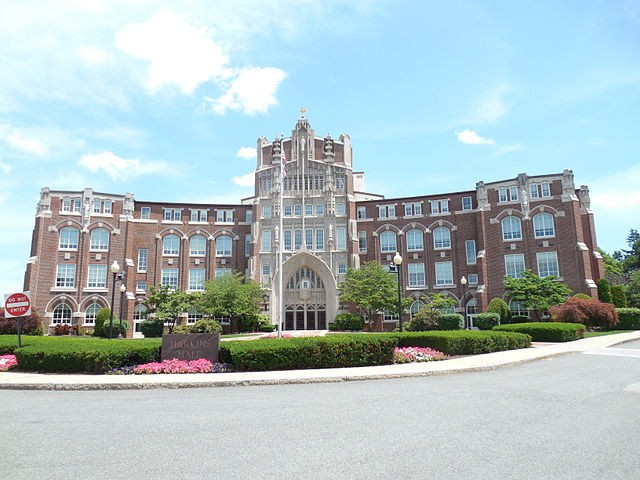1

The state of Ohio is located in the Midwestern United States. Border states include Michigan, Indiana, Kentucky, West Virginia, and Pennsylvania. The state is home to the Ohio River, and extensive natural landscapes made up of lakes, rivers, swamps, forests, and hilly terrain. Major metropolises are also located in the state, including Columbus, Cleveland, and Cincinnati. It’s estimated that more than 11.6 million people currently reside in the state of Ohio. Ohio industry prides itself on a green economy. Most businesses are related to the production of rubber, plastics, metals, and electrical equipment. The state is home to many top performing institutions of higher education, as well as some of the best public libraries in the country.
For the sake of this list, a “college” is considered any accredited public or private not-for-profit institution that offers four-year degree programs. Campus crime stats, graduation rates, and student retention rates were taken from U.S. Department of Education annual reports. Campus crime rates are based on the number of crimes per 1,000 residents.
Get the Badge!
Did Your City Make the List? Click here to get the badge and display it on your website!
#1 Cincinnati Christian University

The private Christian school of Cincinnati Christian University is situated in Cincinnati, Ohio. Campus is made up of facilities such as the George Mark Elliott Library, The Eagle’s Nest (Student Center), Hill Top Coffee Shop, the Worship and Ministry building, and residence halls. Most common areas of study include Communication Arts, Youth Ministry, Early Childhood Education, Urban & Intercultural Ministry, and Biblical Studies. The school is accredited by several organizations, including the Association of Theological Schools. Student athletes can participate in Division I sports belonging to the National Christian College Athletic Association.
#2 Union Institute & University

Union University is a research institution situated in Cincinnati, Ohio. Students at the school can pursue degrees at the BA, MA, and PhD level. Academic programs are available to on-campus as well as off-campus students. The school is accredited by the Higher Learning Commission. Additional campuses are located in Vermont, California, and Florida.
#3 Ohio State University – Lima

Ohio State University-Lima is set in Lima, Ohio and is more simply referred to as Ohio State Lima. A total of approximately 1,400 students attend the Lima campus, in addition to close to 60,000 students across the Ohio State University system. Students can choose from over 140 courses within 9 specific bachelor programs. Besides academics, students can also become involved in extracurricular activites such as athletics and over 20 other student organizations.
#4 Miami University – Hamilton
Hamilton, Ohio is home to Miami University Hamilton. Approximately 3,600 students attend the school each year. Students can pursue bachelor’s and associate degrees as well as a certificate program at the school. Miami University Hamilton is part of the larger Miami University system, with campuses in Oxford, West Chester, and Middletown, Ohio, as well as in Luxembourg. The university is a non-residential campus, although students can become involved in athletics such as softball, basketball, golf, and volleyball.
#5 Cleveland Institute of Art

The Cleveland Institute of Art in University Circle, Cleveland is among the oldest art and design colleges in the country. Approximately 570 students attend the school each year. Common areas of study include animation, printmaking, jewelry + metals, game design, illustration, and painting among many others. In addition to the bachelor of fine arts program, continuing education, summer workshops, and pre-college programs are also available to students.
#6 Mount Vernon Nazarene University

The private liberal arts college of Mount Vernon Nazarene University is set in Mount Vernon, Ohio. More than 2,200 undergraduates and graduate students attend the school each year. Bachelor’s as well as Master’s programs are available to students. In addition to main campus at Mount Vernon, satellite campuses are located in Albany, Newark, and Mansfield as well. Students can become involved in such extracurricular activities as student government, mission trips, intramural sports, as well as NAIA athletics including basketball, baseball, cross country, golf, and soccer.
#7 University of Findlay

Findlay, Ohio is home to the University of Findlay, a private university of about 3,700 undergraduate and graduate students. Undergraduate students can choose from more than 65 academic concentrations. UF specializes in unique programs such as pre-veterinary medicine, nuclear medicine technology, and equestrian studies. Campus spans 73 acres, including its extensive nature preserve and farmland which hosts facilities such as the James L. Child Jr. Equestrian Complex and Animal Sciences Center. In addition to academics, students can participate in over 100 student clubs and organizations.
#8 Malone University

Malone University welcomes approximately 2,600 students annually to its Canton, Ohio campus. The school has maintained historically established religious affiliations, such as with the Religious Society of Friends and the Evangelical Friends Church International. Nevertheless, the student body is representative of almost 50 different religious sects. Students can study within the School of Nursing and Health Sciences, the School of Business and Leadership, the School of Education and Human Development, and the College of Theology, Arts and Sciences. Student organizations include Multicultural Student Union, Student Senate, and Forensics.
#9 Marietta College

The liberal arts school of Marietta College is situated in Marietta, Ohio. The total student body is comprised of approximately 1,200 students pursuing degrees in over 45 concentrations. Marietta College is dedicated to providing students with a liberal arts education, but also focuses on such core values as a global perspective, leadership, and community service. High achieving students are rewarded with such honors as the Dean’s List, Freshman and Sophomore Scholars, and Degrees with Distinction. Student athletes can participate in a total of 18 varsity sports.
#10 Lourdes University

Sylvania, Ohio is home to Lourdes University, a Roman Catholic University that spans 127 acres. Postgraduates and undergraduates makes up a total of more than 1,500 students. Academics are based on a liberal arts curriculum as well as professional programs. Master academics include programs such as business and leadership, human services, and nursing. Besides academic pursuits, students are ingrained with core values based on service, community, reverence, and learning.
#11 Ohio Christian University

The private institution of Ohio Christian University is located in Circleville, Ohio. Each year, about 3,300 student attend the school to pursue degrees as Bachelor of Arts, Associate of Arts and Masters of Arts. In recent years, OCU has expanded its student center and science and logistic center. Students can join activities outside the classroom, such as athletic and student worship groups.
#12 John Carroll University

Jesuit Catholic institution, John Carroll University, is a private liberal arts school located in University Heights, Ohio. Approximately 3,000 undergraduate and 700 graduate students attend the university each year. Common undergraduates studies include business, science, and arts. All students must complete coursework in philosophy, religious studies, social justice, global studies, and a foreign language inline with Jesuit teachings of educating the individual as a whole. Students are also encouraged to participate in international programs in places such as England and Japan.
#13 Walsh University

Located in North Canton, Ohio, Walsh University is a four-year institution with Roman Catholic affiliation. Approximately 3,000 undergraduates and graduates attend the school each year. Students choose from over 50 academic majors with an emphasis on liberal arts. Walsh University also specializes in a physical therapy program, among other rigorous graduate programs. In addition to academic pursuits at the main campus, students can attend classes at satellite campuses within Ohio, an international campuses including Castel Gandolfo in Italy.
#14 Bluffton University

Bluffton University is a Christian institution that focuses on a liberal arts education. Over 1,000 students attend the school each year. Degrees include bachelor of arts, bachelor of science, master of arts in education, master of business administration, and master of arts in organizational management. In addition to academic achievement, Bluffton places an emphasis on social engagement and civic responsibility. Students can become active in athletics, student media, student government, as well as performance groups and spiritual organizations.
#15 Mount St. Joseph University

The private school of Mount St.Joseph University is situated on a suburban campus of 92 acres. Over 2,300 students attend the Catholic, co-educational school including undergraduates and graduates. Popular graduate programs include education, business administration, religious studies, nursing, and physical therapy. In addition to academics, students can become involved in the student newspaper as well as other extracurriculars.
#16 Lake Erie College

The liberal arts school of Lake Erie College is set in Painesville, Ohio. Each year, about 1,250 students attend the college. As early as 1954, and as the first to do so, Lake Erie College has encouraged students to continue their studies abroad. Lake Erie is well-known as a top school for equestrian studies. In addition to academics, students can become involved in NCAA Division II athletics.
#17 Miami University – Middletown
Miami University Middletown offers programs within bachelor’s and associate degrees as well as certificate programs. A total of about 3,000 students attend the school, as undergraduates and graduates. Campus spans a heavily forested area, and is considered the oldest regional campus in the Miami University system. Sports teams at the university function within the Ohio Regional Campus Conference
#18 Otterbein University

Westerville, Ohio is home to Otterbein University, a liberal arts college. A total of nearly 3,000 students pursue studies in over 74 majors and 44 minors, as well as 8 graduate programs. Popular programs include education, music, engineering, and business management. In addition to academics, students participates in more than 100 student organizations including Greek Life and Ohio Athletic Conference athletics.
#19 Ohio Northern University

Ohio Northern University in Ada, Ohio hosts more than 3,700 students each year. ONU is comprised of five colleges, including the Claude W.Pettit College of Law. In addition to traditional academic programs, coursework is also available in a distant learning setting. Campus includes facilities like the Music Department building, Robertson-Evans Pharmacy building, and the Dial-Roberson Stadium. Students athletes can participate in NCAA sports, including baseball, basketball, cross country, soccer, and track & field.
#20 Ashland University

Spanning 135-acres, Ashland University is situated in Ashland, Ohio in addition to satellite campuses in north and central portions of the state. A total of approximately 5,700 students attend the university. Undergraduates alone can choose from about 70 majors. Popular areas of academic studies include environmental science, entrepreneurship, and actuarial science. Students can also pursue a range of education-related majors, incluign pre-K through doctorate related material. Ashland equips students with core values based on global citizenship and service, in addition to academic pursuits.
#21 Case Western Reserve University

Case Western Reserve University of Cleveland, Ohio welcomes 4,600 undergraduates and 5,600 graduates each year. Students hail from all 50 states and over 100 other countries. Popular academic programs include biology, social work, nursing, biomedical engineering, mechanical engineering, and psychology. Many alumni have gone on to work for notable software development companies and also include the lead developer and creator of Gmail. Prototypes for such inventions as cronoary artery disease surgery treatment, CPR defibrillation, blood transfusion, and polymers were all first developed at Case Western Reserve University.
#22 Cleveland State University

Cleveland State University, or CSU, is located in Cleveland, Ohio. Students total over 17,500 and pursue studies in the arts, sciences, and humanities, as well as research and creative endeavors. The school offers 70 majors in additions to 27 master’s programs and 6 doctoral degrees. CSU is known for its partnership with the NASA Glenn Research Center. In recent years, CSU has expanded on campus facilities, particularly in the technology and theater departments. Students are encouraged to get involved via student media and athletics.
#23 Baldwin Wallace University

Berea, Ohio hosts the liberal arts college known at Baldwin Wallace University. Over 4,000 students attend the coeducational school as undergraduate and graduate students. Common academic programs at the school include neuroscience, business, education, and music. In particular, the institution is well-regarded for the Baldwin Wallace Conservatory of Music, which hosts a Bach Festival each year. Students athletes can participate in NCAA sports held at top-notch athletic facilities on campus.
#24 Xavier University

The Jesuit Catholic school of Xavier University is situated in Norwood, Ohio, just outside Cincinnati. Each year, about 6,650 students attend the university as undergraduates and graduates. Academics are focused on the liberal arts, but as a Jesuit institution, there is also a strong emphasis on education of the whole individual. Highlights on campus include the Gallagher Student Center and the Bellarmine Chapel in addition to the Cintas Center, which hosts many athletic events. A total of 81 majors are offered at Xavier, including theology, history, literature, social sciences, and mathematics.
#25 Kent State University

More than 30,00o students attend Kent State University of Kent, Ohio as undergraduates and graduates. Since 1910, Kent State has built a name for itself especially in the field of education. Today, over 300 programs are offered to students at the undergraduates, graduate, and doctoral level. Doctorate academics focus on programs such as library science, history, journalism, fashion design, nursing, and business. Campus covers nearly 870 acres and encompasses over 100 buildings as well as natural reserve areas. Kent hosts a number of satellite campuses as well including Ashtabula, East Liverpool, Salem, and Stark. Students can become involved in extracurricular activities such as Greek Life , performing arts, and student media. Athletes at the school participate in NCAA Division I athletics.
#26 University of Cincinnati

The University of Cincinnati, or UC, enrolls more than 40,000 students each year at the undergraduate and graduate level. It’s considered among the 50 biggest universities in the country. UC, also a public research institution, has consistently ranked high for its academic programs on a national and international scale. UC also ranks high in the number of CEO alumni of Fortune 500 companies. Students can choose from over 350 programs including associate, bachelor, professional, and doctorate programs including music and arts, science and engineering, medical and human services, and business programs. Students can participate in international studies, co-op abroad, and research opportunities in addition to athletics and over 550 other student organizations.
#27 Muskingum University

New Concord, Ohio is home to Muskingum University. The Presbyterian affiliated institution welcomes about 2,600 undergraduates and graduates each year. Students choose from a total of 40 academic majors and several graduate programs. Campus spans 225 acres including a hilly landscape with over 20 residential, academic, and extracurricular buildings such as the Little Theater, Brown Chapel, Boyd Science Center, and the Neptune Center. Students can become involved in activities such as Greek Life and athletics.
#28 Youngstown State University

Each year, approximately 15,000 students attend Youngstown State University as undergraduate and graduate students. While some students choose to live on campus, many others commute to classes every day from home or from off-campus housing. In addition to students hailing from around the country, the student body also represents international students from approximately 45 other countries. The school hosts a top notch planetarium, as well as academic and extracurricular facilities.
#29 Oberlin College

Officially established in 1833, and originally as the Oberlin Collegiate Institute, the Oberlin College of today is considered one of the oldest coeducational institutions of higher learning in the world. The school of 2,900 students is especially regarded for its Conservatory of Music. Students pursue academic interests in over 50 majors and minors. Popular studies include biology, history, politics, and environmental studies. The Oberlin student body is well-known for its commitment to political engagement, LGBTQ activism, student leadership and creative expression through the arts.
#30 Ohio University

The public research institution, Ohio University, is set on 1,850 acres near Athens, Ohio. A total of approximately 38,000 students attend the university each year at the undergraduate and graduate level. Besides the main campus, additional campuses are located in Lancaster, Dublin, and Pickerington, Ohio to name a few. Students can choose from over 250 areas of concentration within the areas of business, arts and sciences, communication, engineering, fine arts, and technology. Students can join athletics, student media, and service organizations on campus as well.
#31 Urbana University

The private liberal arts school known as Urbana University is set one hour from Columbus, Ohio in the city of Urbana. Over 1,500 students attend the institution each year. Undergraduate students are offered 28 major concentrations, while common graduate programs such as business administration and education are also offered. Students have many opportunities to become active on campus, including pep band, student government, history clubs, and NCAA Division II sports.
#32 Miami University

The University of Miami, also referred to as the U of M or The U, welcomes nearly 17,000 students each year as undergraduates and graduates. U of M is home to a law school, as well as research facilities and academic buildings built around atmospheric sciences and oceanography (Rosentiel School of Marine and Atmospheric Science). Students can choose from 116 bachelor’s programs, 105 master’s programs, and 63 doctoral degrees. In addition to all 50 of the United States, students also hail from more than 150 countries. The school is dedicated to sustainability on campus. Students can get involved not only in NCAA Division I athletics, but also in Greek Life, the student yearbook, the student newspaper, and several honor societies.
#33 University of Rio Grande

Rio Grande, Ohio is home to the University of Rio Grande, former Rio Grande College. Approximately 2,300 students come to the university each year to pursue such programs as education, fine arts, and nursing. Special facilities like the Greer Museum encourage students to experience art and culture outside the classroom. Rio Grande University is home to a Sculpture Garden as well as the Grande Chorale jazz group. Student athletes can participate in NAIA sports, including men’s soccer, baseball, and basketball, and women’s cross country, softball, and track & field.
#34 University of Dayton

A Roman Catholic school, the University of Dayton is a coeducational institution as well as research facility. Approximately 11,000 students attend the university as undergraduates and graduates. Students hail from across the country and around the world, including representation of 40 nations. Students choose from over 80 academic concentrations, including education, health sciences, arts, and engineering, as well as the first program in human rights in the country. Students can become involved in a myriad of activities on the historic campus including ministry, volunteering, and athletics, and are also encouraged to further their education abroad.
#35 Shawnee State University

Situated in southern Ohio, Shawnee State University is a public school open to both undergraduate and graduate students. In total, about 4,600 students attend Shawnee each year. Students choose from over 80 bachelor’s, associate degrees, and master’s degree programs. Just some of many degrees offered include English and Humanities, psychology, education, computer programming, health management, photography, graphic design, plastics engineering technology, physical therapy, and simulation and gaming engineering technology. In addition to life on campus, students are encouraged to spend time abroad, including programs in Britain, Spain, Greece, and Ireland.
#36 Bowling Green State University

Over 17,500 students attend Bowling Green State University in Toledo, Ohio each year. The research university offers 200 undergraduate programs in addition to master’s and doctoral pursuits as well. Common research studies executed on campus include sociology, human development, energy, and sustainability. A satellite campus is located in Huron, Ohio (BGSU Firelands). In addition to academics, students can choose from over 300 students organizations to become involved in. Athletes compete at the NCAA Division I level as a member of the Mid-American Conference and the Western Collegiate Hockey Association.
#37 University of Toledo

The University of Toledo, or UT has three campuses, including its main campus in Toledo, and satellite campuses in Scott Park, West Toledo, downtown Toledo, and Maumee Bay State Park. Over 23,000 students attend the school each year. UT, since 2009, has committed to sustainability on its campuses by reducing food waster, recycling, and conserving water. Students can choose from more than 250 academic programs, within such colleges as the College of Communication, College of Engineering, College of Social Justice and Human Services, and the College of Natural Sciences and Mathematics. Students can become involved in athletics, research opportunities, study abroad, and service learning.
#38 University of Mount Union

A private liberal arts school, the University of Mount Union is set in Alliance, Ohio. Each year, the school admits upwards of 2,200 students to its academic programs. The university has consistently ranked high as a leading liberal arts college of the Midwest. Students choose from over 60 majors and 53 minors of concentration. In addition, special areas of study are offered such as programs in pre-ministry, pre-law, and Army ROTC. Student athletes can participate in NCAA sports in a total of 11 men’s and 10 women’s sports. Students can also become involved on campus through Greek Life, theater, and music.
#39 University of Akron

Public research institution, the University of Akron, is situated in Akron, Ohio. More than 26,000 students attend the school as undergraduates and graduates. Academically speaking, undergraduates can choose from over 200 majors, and graduates have over 100 options in academic programs. Students hail from all over the state, country, and 71 additional countries. The College of Polymer Science and Polymer Engineering and University of Akron School of Law have long been regarded for their rigorous academic programs. University of Akron also leads in science research, particularly in orthopedics and medicine.
#40 College of Wooster

Each year, approximately 2,000 students attend the College of Wooster in Wooster Ohio, northeast of Columbus. From an early undergraduate level, students are encouraged to pursue research endeavors through a mentorship program. Degrees available include a Bachelor of Arts, Bachelor of Music, and Bachelor of Music Education. Students are encourage to gain a global perspective through study abroad programs in over 60 countries, in addition to majors such as International Relations and Cultural Area Studies. Students can also become active in the performing arts, student-run media, and athletics.
#41 Defiance College

Liberal arts college, Defiance College, admits approximately 1,000 students each year. The school places a particular emphasis on social engagement in addition to academic excellence. Undergraduates can choose from over 40 majors, whereas graduates choose between a focus in either education or business. Popular programs include forensic science, nursing, and international studies. Defiance athletes participate in over 15 sports teams belonging to the NCAA and Heartland Collegiate Athletic Conference.
#42 Notre Dame College

The liberal arts school of Notre Dame College is set in South Euclid, Ohio. About 2,250 students attend the school annually. The 48-acre academic campus offers students a choice of more than 30 majors. Students hail from all over the United States, as well as 19 foreign countries. Academic programs are broken down into art & humanities, business administration, education, nursing, science & mathematics. Other than academics, students can also become involved in honor societies and athletics.
#43 Wright State University

Situated in Fairborn, near Dayton Ohio, Wright State University is a public research institution open to men and women. Over 18,000 students attend the school each year. Much of present-day campus sits on portions of the former Wright-Patterson Air Force Base. A second satellite campus, spanning 173 acres, is located in Celina, Ohio, on the edge of Grande Lake St. Mary’s. Students can study within colleges such as Nursing and Health, Education and Human Services, Liberal Arts, and Science and Mathematics. Outside the classroom, students can become involved in Greek Life, ROTC, and athletics at the NCAA Division I level.
#44 Wittenberg University

Springfield, Ohio hosts Wittenberg University, a four-year, liberal arts school. Each year, approximately 2,000 students attend the school as undergraduates and graduates. Students choose from over 70 majors and special concentrations. Wittenberg University has consistently high as a top liberal arts college in the nation. Students are encouraged to become involved in their local community, as well as international affairs. The East Asian Institute for International Studies at Wittenberg University provides students with a study abroad opportunity that also promotes service learning. Extracurricular include Gay-Straight Alliance, student-run media, Pep band, Union Board, among many others.
#45 Ohio Wesleyan University

Delaware, Ohio is home to Ohio Wesleyan University, a private liberal arts school. Nearly 1,650 students attend the school each year. Students hail from all over the United States, and in addition, Ohio Wesleyan has among the most international students at a liberal arts school in the country. Students pursue degrees as a Bachelor of Arts, Bachelor of Fine Arts, or Bachelor of Music. Nearly 90 majors are offered by the university. Both historically and up until the present day, Ohio Wesleyan places a strong emphasis on international learning and cultural immersion, with notable programs in Salamanca, Spain and Tanzania, Africa.
Share the “Safest Colleges” Badge on Your Site
